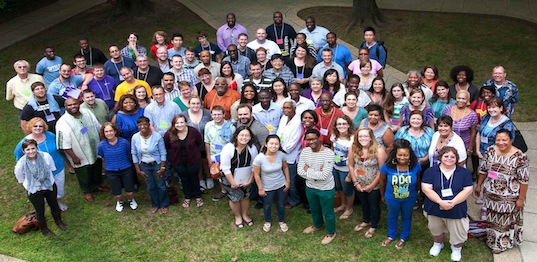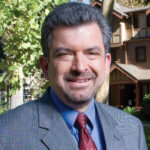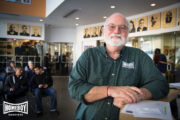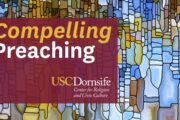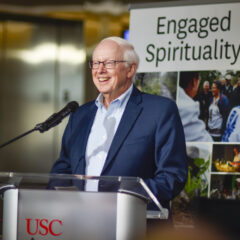According to U.S. Census projections, sometime during the 2040s America’s white population will no longer be the majority, but only the largest of several sizeable ethnic-racial groups in the country. The Association of Theological Schools (ATS), the accrediting association of seminaries and schools of theology, has been studying current and future impacts of these changing demographic realities on theological education.
Through its Committee on Race and Ethnicity, the ATS has been working with over 30 seminaries that want to address the changing ethnic profile of their student populations, as well as the places where students will serve, through a project called “Preparing for 2040.” Seminaries that have been a part of the project are focusing on key issues such as curriculum development and faculty recruitment to prepare to serve rapidly changing student bodies and faith communities.
Two recent scholarly studies have looked closely at the consequences of this evolving reality. One study highlights the decline in the overall number of students in ATS seminaries and schools of theology. The churches and denominations that founded many of these institutions are shrinking and so are sending fewer students to seminary. Also, many of the religious movements that are growing in North America do not look to seminaries as the training ground for their pastors. Both of these trends mean that fewer people are going to accredited seminaries, while many pastors and lay leaders are being prepared for ministry through alternative modes of theological education, such as Bible institutes or church-based training programs.
A second study determines that the “racial-ethnic” (i.e. non-white) student population in ATS schools is the only demographic cohort that is growing. By the end of the 2011-2012 academic year, 38.2 percent of all students in ATS schools were non-white, a category that represents all U.S. minority students as well as international visa students.
At a recent conference on racial-ethnic minority students in graduate theological education, Auburn Seminary’s Barbara Wheeler, one of the researchers behind these studies, noted that ethnic minorities and recent immigrants are more Christian than the U.S. population at large. Conversely, Wheeler also observed that secularization is largely a white phenomenon in the U.S. All of these factors suggest that the 2040 “shift” predicted by the Census Bureau is likely to happen sooner in Christian churches. In other words, by the 2030s the majority of active Christians in the U.S. will most likely not be white.
That turning point might occur even sooner in the context of theological education. It is already the case that the non-white constituency in many of the fastest-growing seminaries is near the 50 percent mark or even past it. And seminaries with declining enrollments tend to have proportionally larger white student populations. If the trends charted in these two studies continue, white students could account for less than 50 percent of the general seminary population sometime during the 2020s.
These studies also look at religious identification among “racial-ethnic” theology students. Sixty-three percent attend evangelical seminaries, and a growing proportion of these students come from Pentecostal churches and denominations. As noted above, many of them have very different assumptions about how clergy are shaped for ministry. In fact, many of these students choose to attend seminary not prior to heeding a call to the pulpit but as a form of continuing theological education. Their presence is challenging seminaries to rethink how they do ministerial formation, what theological education looks like in a minority community and what types of congregations they are preparing their students to lead.
The new developments described in these studies are already a lived reality in seminaries in Southern California. Some of the seminaries in the region are already majority non-white, and those with the largest minority student populations are all evangelical institutions. Moreover, the majority of Christians of all traditions in the region are not white. And while most of the larger ecclesiastical and educational structures are still led by whites, the deeper demographic shift has already happened in congregations.
This raises important questions about what Christianity will look like in Southern California–and the U.S.–in the future. Will these vibrant churches and leaders bring new spiritual vitality to existing white majority churches? Will the pull of secularization sap the vibrancy of minority churches? What role will a non-white-led Christianity play in an increasingly secularized white society? Because American religious culture has gone through cycles of spiritual renewal and decline in the past, a new spiritual revival might change these patterns. In any case, it is already 2040 at a seminary near you.
Juan Martinez is a former fellow with the USC Center for Religion and Civic Culture.
